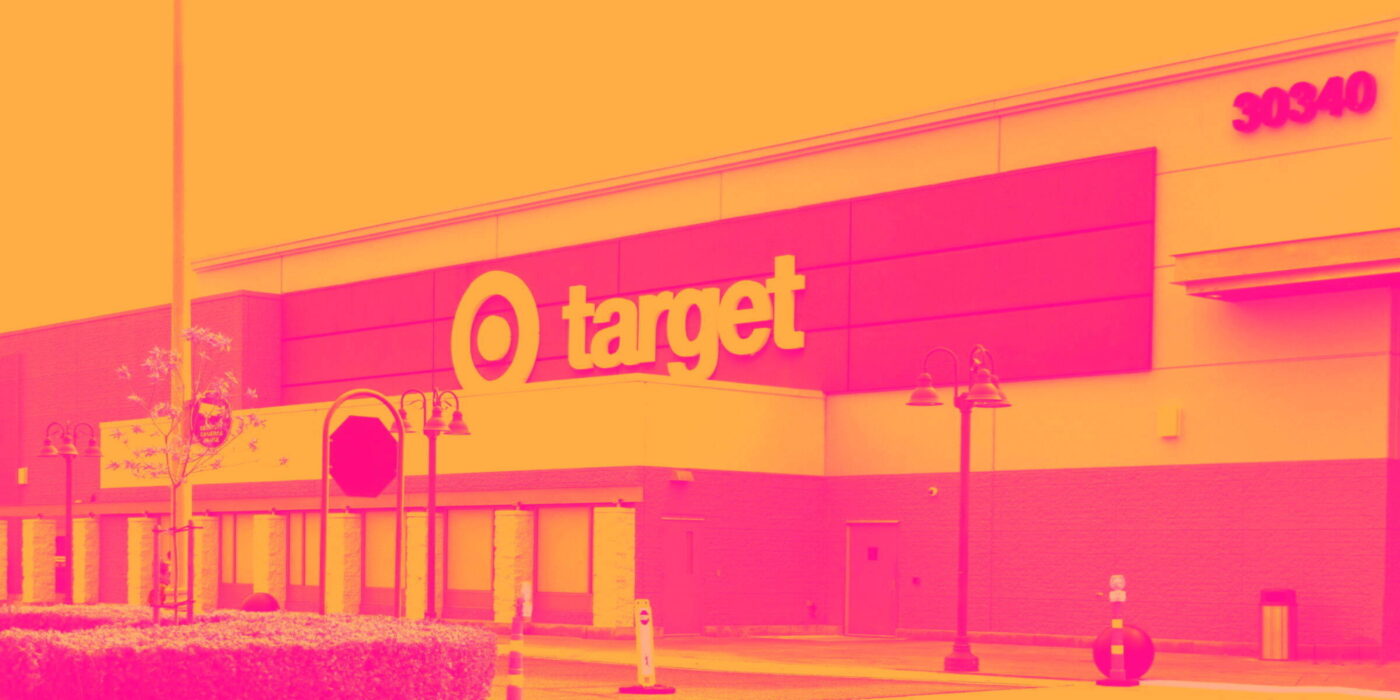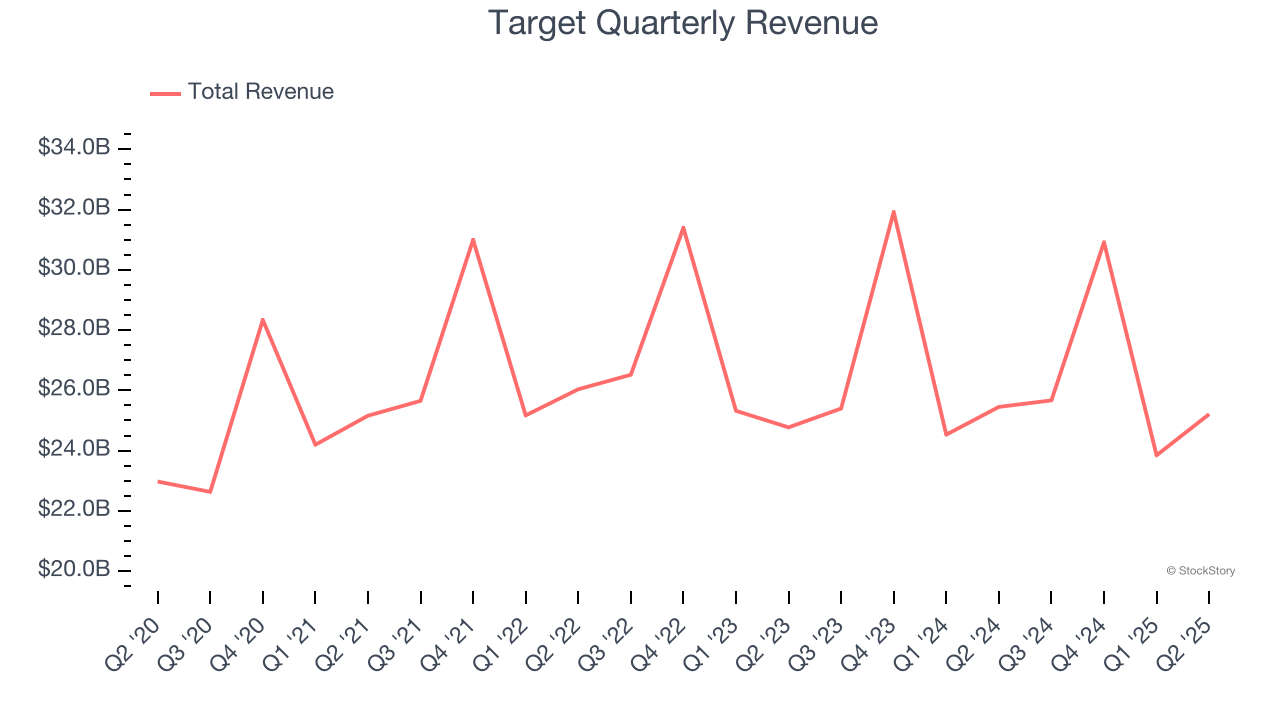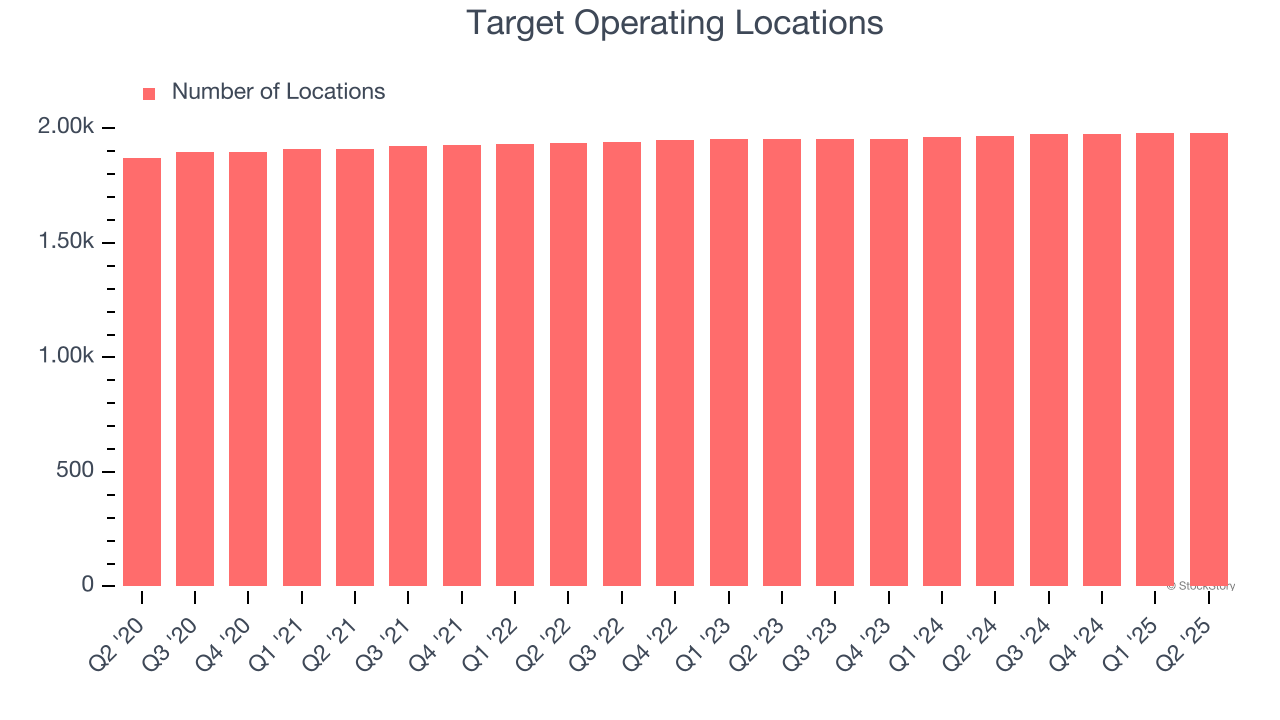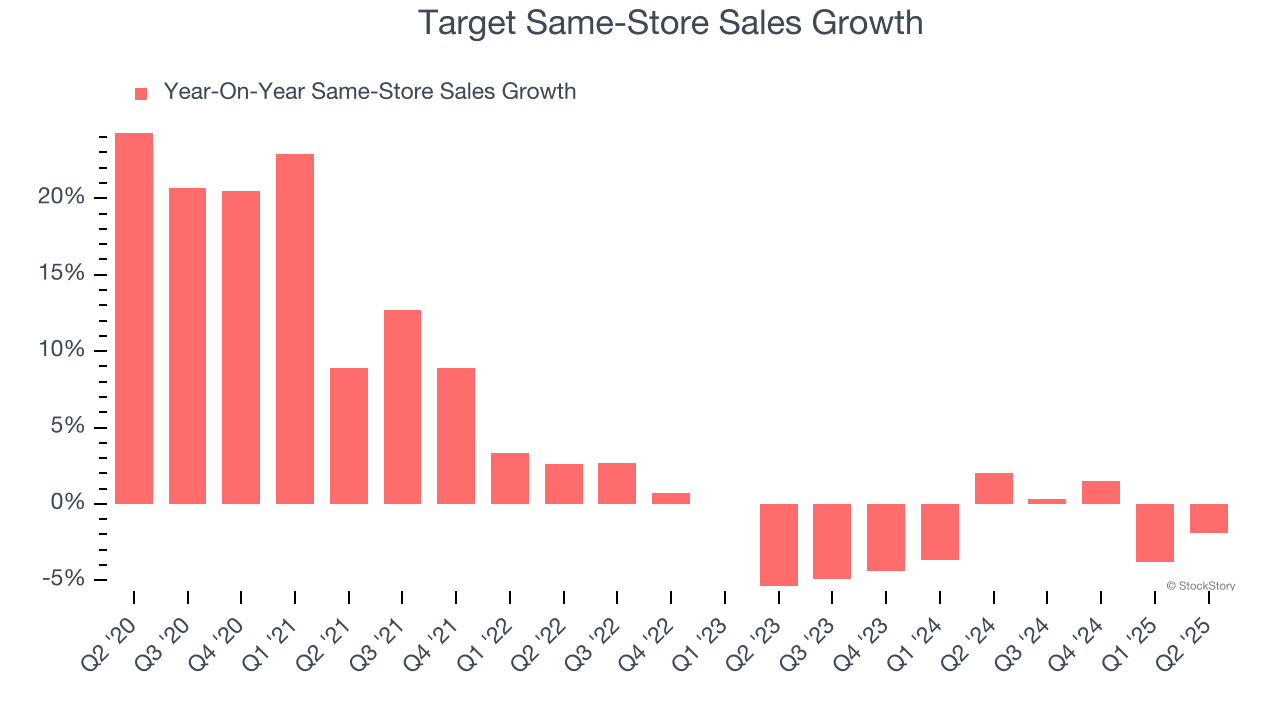
General merchandise retailer Target (NYSE:TGT) reported revenue ahead of Wall Street’s expectations in Q2 CY2025, but sales were flat year on year at $25.21 billion. Its non-GAAP profit of $2.05 per share was 0.7% above analysts’ consensus estimates.
Is now the time to buy Target? Find out by accessing our full research report, it’s free.
Target (TGT) Q2 CY2025 Highlights:
- Target named Michael Fiddelke as its new CEO, effective February 1st
- Revenue: $25.21 billion vs analyst estimates of $24.89 billion (flat year on year, 1.3% beat)
- Adjusted EPS: $2.05 vs analyst estimates of $2.04 (0.7% beat)
- Management reiterated its full-year Adjusted EPS guidance of $8 at the midpoint
- Operating Margin: 5.2%, down from 6.4% in the same quarter last year
- Free Cash Flow Margin: 4%, down from 6.3% in the same quarter last year
- Locations: 1,982 at quarter end, up from 1,966 in the same quarter last year
- Same-Store Sales fell 1.9% year on year (2% in the same quarter last year)
- Market Capitalization: $47.87 billion
"With the board's unanimous decision to appoint Michael Fiddelke as Target's next CEO, I want to express my full confidence in his leadership and focus on driving improved results and sustainable growth. He's contributed meaningfully during times of change and played a critical role in establishing the differentiated capabilities that will continue to drive Target forward. Michael brings a deep understanding of our business and a genuine commitment to accelerating our progress," said Brian Cornell, chair and chief executive officer of Target Corporation.
Company Overview
With a higher focus on style and aesthetics compared to other large general merchandise retailers, Target (NYSE:TGT) serves the suburban consumer who is looking for a wide range of products under one roof.
Revenue Growth
A company’s long-term sales performance is one signal of its overall quality. Any business can experience short-term success, but top-performing ones enjoy sustained growth for years.
With $105.6 billion in revenue over the past 12 months, Target is a behemoth in the consumer retail sector and benefits from economies of scale, giving it an edge in distribution. This also enables it to gain more leverage on its fixed costs than smaller competitors and the flexibility to offer lower prices. However, its scale is a double-edged sword because there is only so much real estate to build new stores, placing a ceiling on its growth. To accelerate sales, Target likely needs to optimize its pricing or lean into international expansion.
As you can see below, Target grew its sales at a tepid 5.4% compounded annual growth rate over the last six years (we compare to 2019 to normalize for COVID-19 impacts) as it didn’t open many new stores.

This quarter, Target’s $25.21 billion of revenue was flat year on year but beat Wall Street’s estimates by 1.3%.
Looking ahead, sell-side analysts expect revenue to remain flat over the next 12 months, a deceleration versus the last six years. This projection doesn't excite us and suggests its products will see some demand headwinds.
Today’s young investors won’t have read the timeless lessons in Gorilla Game: Picking Winners In High Technology because it was written more than 20 years ago when Microsoft and Apple were first establishing their supremacy. But if we apply the same principles, then enterprise software stocks leveraging their own generative AI capabilities may well be the Gorillas of the future. So, in that spirit, we are excited to present our Special Free Report on a profitable, fast-growing enterprise software stock that is already riding the automation wave and looking to catch the generative AI next.
Store Performance
Number of Stores
A retailer’s store count influences how much it can sell and how quickly revenue can grow.
Target operated 1,982 locations in the latest quarter, and over the last two years, has kept its store count flat while other consumer retail businesses have opted for growth.
When a retailer keeps its store footprint steady, it usually means demand is stable and it’s focusing on operational efficiency to increase profitability.

Same-Store Sales
The change in a company's store base only tells one side of the story. The other is the performance of its existing locations and e-commerce sales, which informs management teams whether they should expand or downsize their physical footprints. Same-store sales is an industry measure of whether revenue is growing at those existing stores and is driven by customer visits (often called traffic) and the average spending per customer (ticket).
Target’s demand has been shrinking over the last two years as its same-store sales have averaged 1.9% annual declines. This performance isn’t ideal, and we’d be concerned if Target starts opening new stores to artificially boost revenue growth.

In the latest quarter, Target’s same-store sales fell by 1.9% year on year. This performance was more or less in line with its historical levels.
Key Takeaways from Target’s Q2 Results
Revenue beat slightly, and full-year guidance was maintained. On the other hand, traffic to its stores fell and gross margin slightly missed. A new CEO was announced. Overall, we think this was a mixed quarter. Investors were likely hoping for more or are likely disappointed in the CEO announcement, and shares traded down 7.2% to $97.75 immediately following the results.
Big picture, is Target a buy here and now? When making that decision, it’s important to consider its valuation, business qualities, as well as what has happened in the latest quarter. We cover that in our actionable full research report which you can read here, it’s free.
